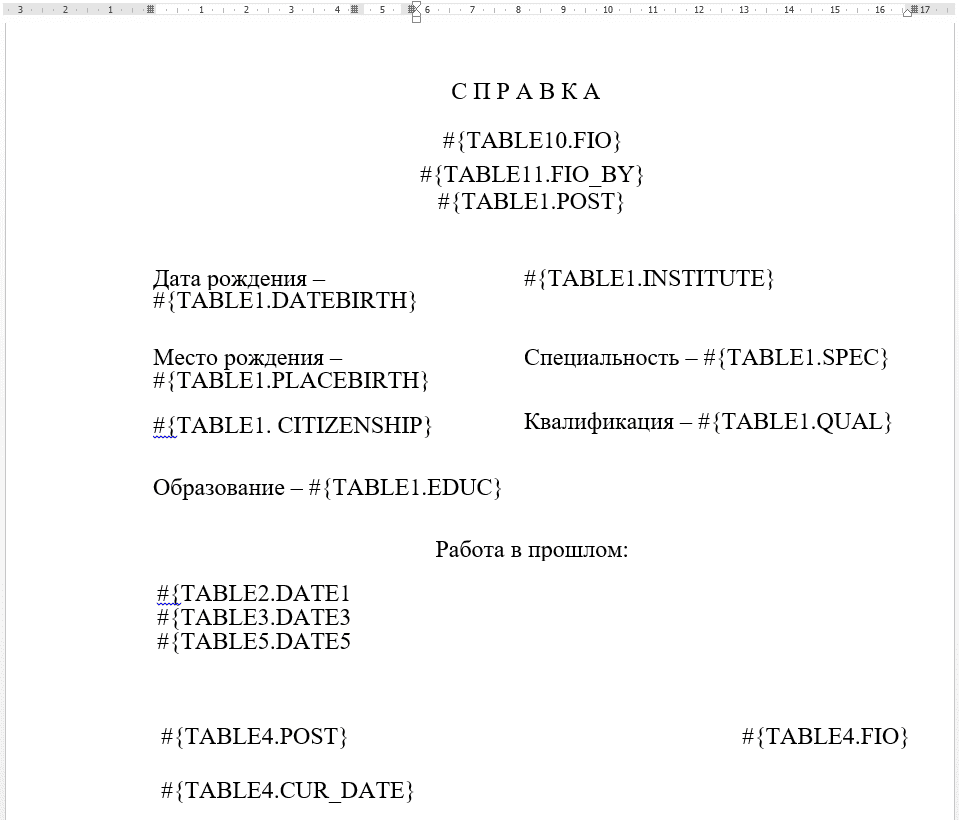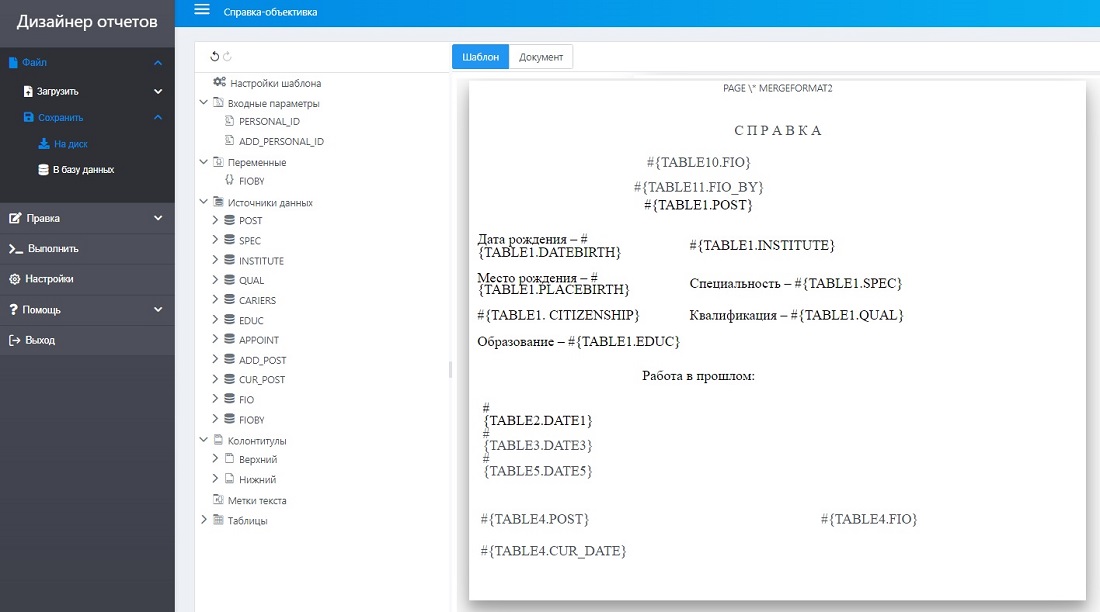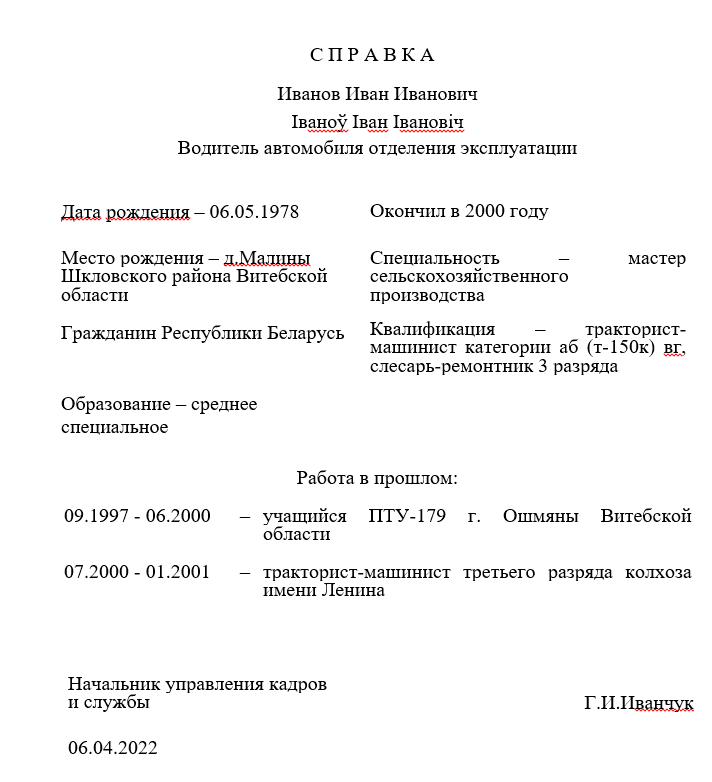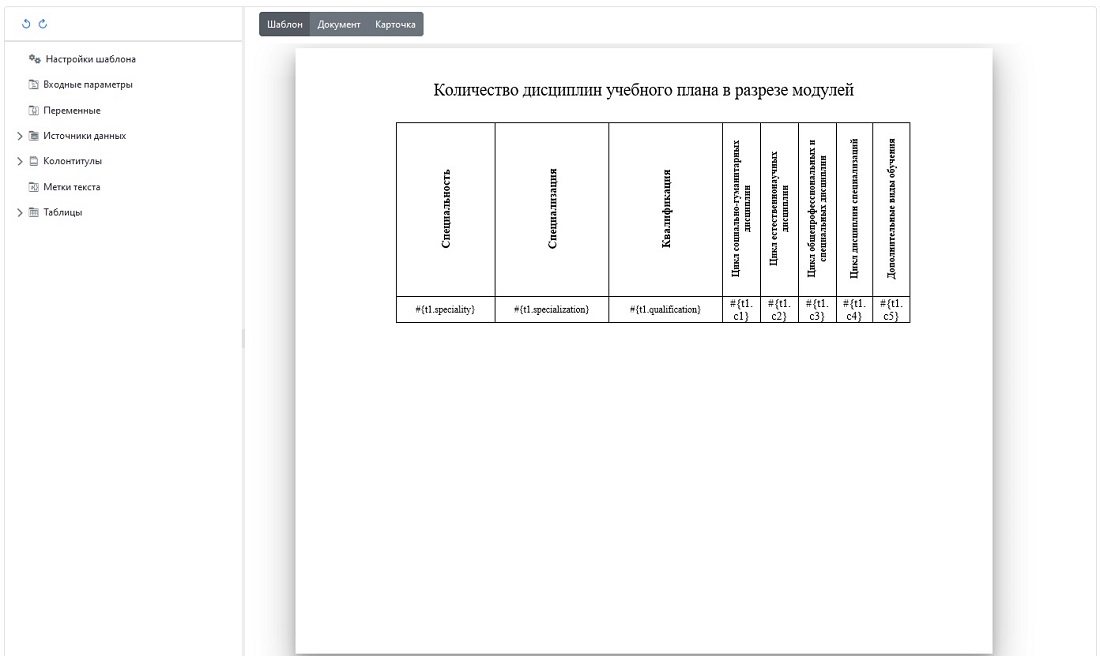The "Report Designer" subsystem is designed to generate regulated reports based on templates that the user creates. The subsystem has a Rest API that allows you to integrate this subsystem into other systems. The main advantage is that the subsystem does not just print data in .docx, and .xlsx formats, but displays a clearly regulated official report. The user no longer needs to manually enter data from the information system of an enterprise or organization into a report form, the system will do this automatically.

The user, using his existing office application (Microsoft Office, LibreOffice, OpenOffice, etc.), creates a report document template in .docx or .xlsx format. In those places of the template where it is necessary to insert data from the information system of an enterprise or organization, the user places special markers #{…}.

At this step, the user loads a previously prepared template into the "Report Designer" module and configures it. When customizing a template, the user creates data sources, associates template markers with data source fields, tests the template, and saves it to the database.

The user also has the ability to add input parameters that will be passed to the template in the process of its formation from an external system.

To automatically generate reporting documentation, it is necessary to integrate this subsystem into the information system of an enterprise or organization using the Rest API. This will allow, when you click on the output of the report, to get a document with data already filled in.

To generate reports and view logs, use the "Report Service" module.

The subsystem allows you to generate not only flat reporting, but also create dynamic reports.
Step 1: Forming a statistical report template

Step 2: Load the template into the
subsystem

Step 3: We form an appeal to the
necessary procedure

Step 4: Execute the report

created with
WordPress Website Builder .